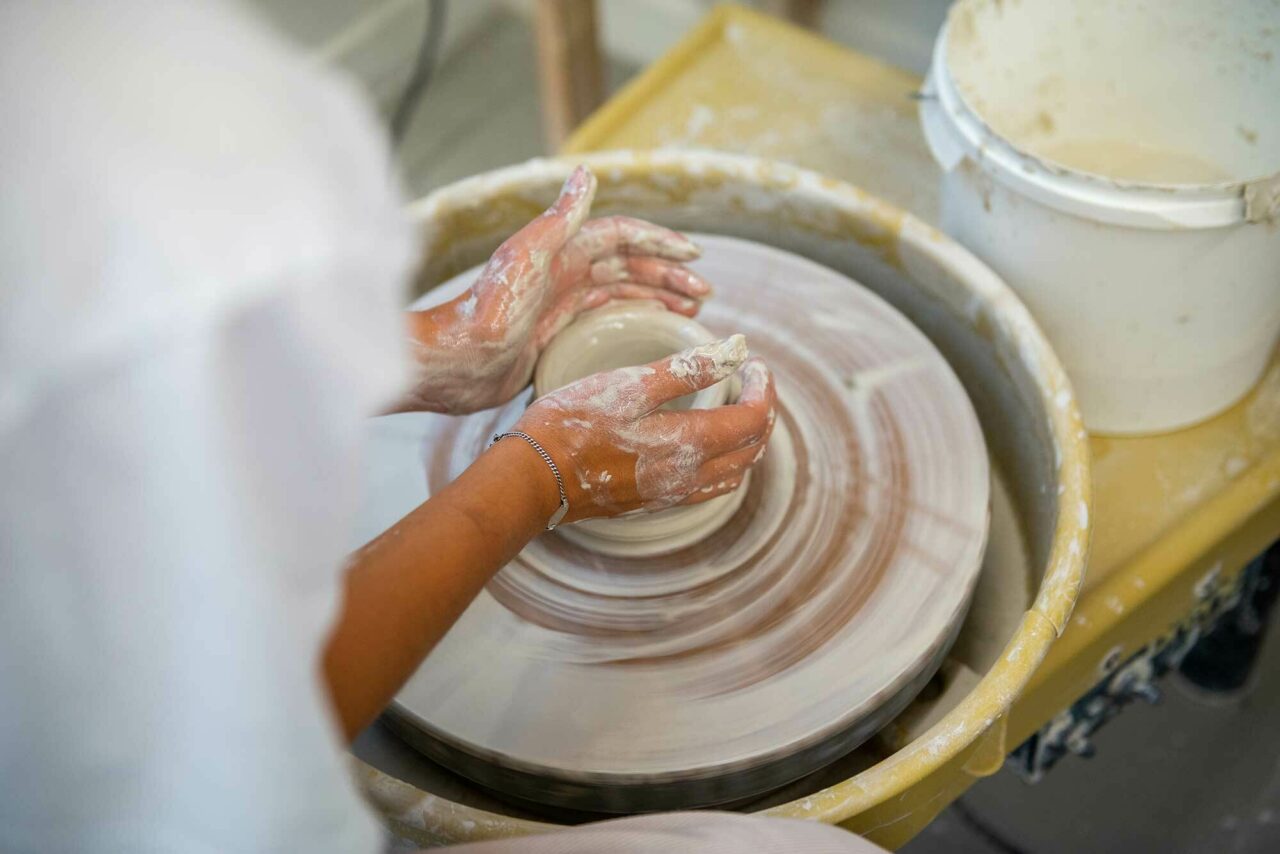Keramiek en sculptuur werkplaatsen
In the Ceramics workshop you get acquainted with various techniques of working with clay and in the Sculpture/Plaster workshops, you get introduced to the traditional craftsmanship of working with plaster and mould making.
What you can do at the Ceramics Workshop
It takes time and concentration to use clay and transform it from an idea into a final product, this is mostly due to the nature of clay. It is malleable at first, but it gradually changes to a rock-hard consistency after firing. That’s why it takes planning and care to achieve the desired results.
Several techniques can be used:
- Use the coiling technique or slabs made with the slab roller to build shapes,
- Turn clay on the potter’s wheel,
- Pressing clay with the extruder or pouring liquid clay in a plaster mould.
Whichever method you use to shape the clay, it all needs to dry before it can be fired. Once it has been bisque fired for the first time, it could be glazed – this is the decorative and protective layer – and then re-fired. It often takes six weeks before you have your final product. You need to consider that working with ceramics takes time, and that you may not succeed on the first try. Practice makes perfect.
You may use the oven (kiln) under supervision of the workshop instructor.
We have 5 kilns in the Ceramics workshop:
| Big kiln | 110-60-80cm (inside measurements) |
| Medium kiln | 62-62-65cm (inside measurements) |
| Two small round kilns | for testing e.d. |
| Small kiln | 64-43-65cm (inside measurements) |
What you can do at the Sculpture/Plaster Workshop
You will be working with wood, stone, epoxy, silicones or plaster and mold making and be free to experiment with different materials.
More information
On the KABK portal you will find more information about the opening hours and contact info of the workshop supervisors.
